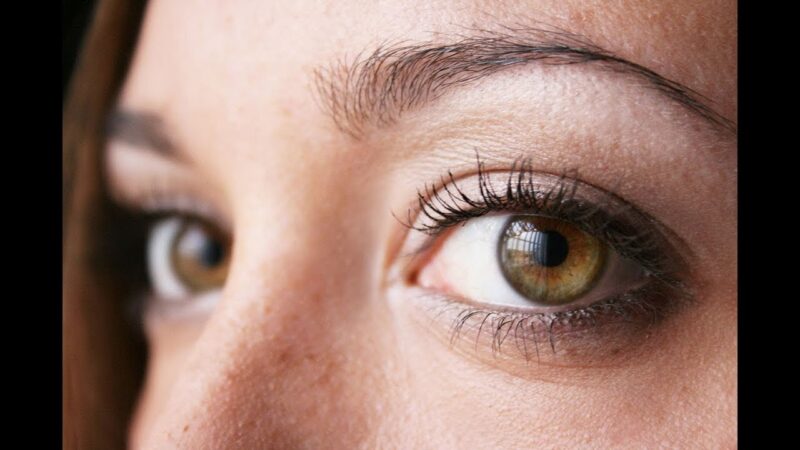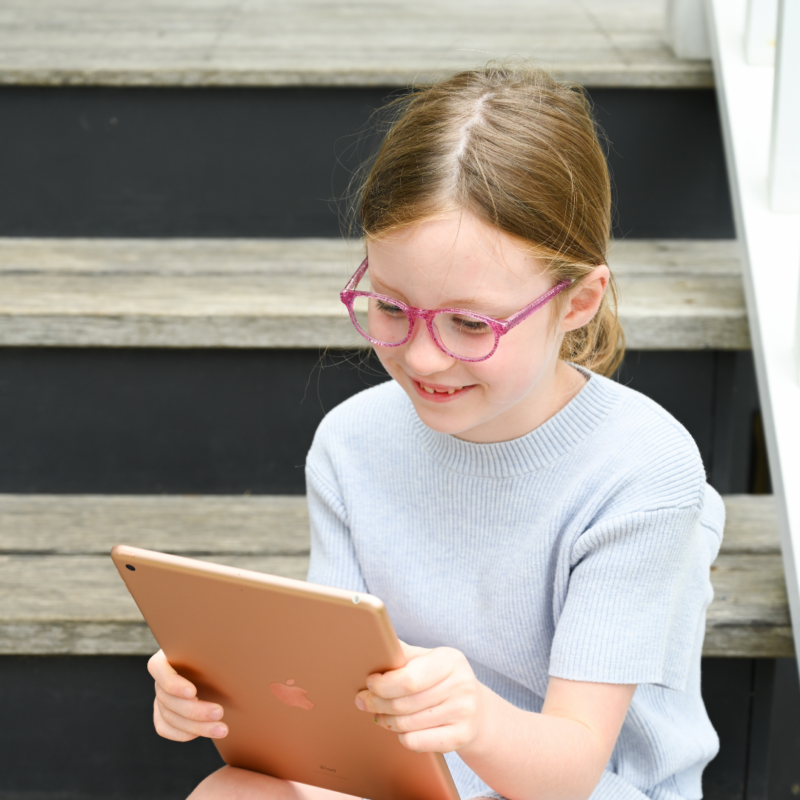Blog

8 tips to take your eyes from red and itchy to allergy-free
Spring has sprung. And so have your allergies.
But don’t start rubbing your eyes just yet. Because with these 8 tricks up your sleeve, spring might become your favourite season.
Stock up on eye drops
Eye drops keep your eyes lubricated. It flushes out pollen and reduces irritation. So, have it handy wherever you go.
Not sure what brand to buy? Book an appointment with your optometrist and get expert advice on the best drops for your eyes.
Stay hydrated
Drink plenty of water. It’s the best way to naturally keep your eyes moist. And that’ll help prevent your eyes from becoming dry and itchy.
Don’t let pollen ruin your day
The simplest method to keep pollen out of your eyes is to stay out of its way. Shut your windows and doors to prevent pollen from getting into your home or car.
Try to stay indoors when pollen counts are highest. Windy days, early mornings and evenings are better spent inside if possible.
Put on those sunnies
When you do go outside, make sure to wear your sunnies. Yes, it protects you from harmful UV rays, but it also keeps pollen at bay.
Glasses for the win
Opt for glasses over contacts. When pollen sticks to your contacts, itching ensues.
But if you can’t part with your contacts, remember to clean them properly every day or choose daily disposable contact lenses.
It’s a yes for a cold compress
If your eyes do get red and blotchy, a cold compress is an easy way to ease inflammation.
All you need is a clean washcloth and cold water. Soak the cloth, wring it, and put it on your eyes for +/- 2 minutes.
Rub-a-dub-dub
Been outside? Wash your hands and face when you go back inside to get rid of any pollen on your skin.
If you’ve spent time gardening, it’s better to take a shower and wash your clothes immediately when you’re done.
And for next level prevention, wash your bedding in warm water. Do this at least once a week.
Keep your hands away from your eyes
Try not to rub your eyes when they itch. Rubbing only irritates your eyes and could introduce bacteria.
Now, if the itchiness becomes unbearable, put in eye drops or us a cold compress.
And there you have 8 cost-effective ways to battle your allergies this spring.
Follow us on socials for more tips to improve your vision and eye health.
AUGUST 2023
Let's examine the lazy eye!
Most people have either heard about, know someone with, or have had their own experiences with a lazy eye. Lazy eye or “Amblyopia” is a condition that affects approximately 2% of the population. It usually develops in children under 8 years old while their vision is still developing and needs to be treated so that it doesn’t permanently affect vision.
If your child has a lazy eye, it’s important to have it examined by an eye specialist and to start treatment as soon as possible. Here's all the facts about lazy eye.
How do you recognise a lazy eye?
It can be difficult to recognise a lazy eye as initially it may not look physically different to the normal eye. However, if you look carefully, you may notice the child’s affected eye may not line up with the stronger eye, it might look off-centre or like it's drifting in a direction that doesn't match where they're looking.
Parents should also look out for a child’s behaviour that may suggest they have vision or eye issues such as the child bumping into objects because depth perception is affected, or if they have difficulty drawing, reading, or writing. Lazy eye can also be recognised in adults as they may experience a wandering eye, blurred vision, double vision, poor depth perception, and headaches.
What is a lazy caused by?
Lazy eye develops because the eye is experiencing abnormal vision or a weaker vision in one eye, and because it occurs in children, it may not be recognised right away. When left untreated, it can result changes to the nerve pathways between a thin layer of tissue (retina) at the back of the eye and the brain, making the condition more severe and long lasting.
Can lazy eyes be fixed?
Lazy eye can cause permanent vision problems if left untreated, but the good news is that a lazy eye can be treated. Lazy eye needs to be treated while the child is young, and their eyes are still growing. If lazy eye is not treated during childhood, it still can be treated for teenagers and adults, however it takes longer and is usually less effective.
How are lazy eyes treated?
An eye specialist will treat a lazy eye by making the child use their weaker eye more. This is often done by putting a patch over the child's stronger eye, or the child may wear glasses with a lens that blurs vision in that eye. In some cases, eye drops can be used to blur vision in the stronger eye. Using the lazy eye as the dominant eye will “train” the lazy eye to become stronger.
Have questions? Your local eye specialists can help!
EyeSense in Leederville has a team of paediatric eye care professionals ready to assist with your child’s vision requirements. To find out more about our services, book an appointment by clicking on the Book Appointment tab on our website or give us a call on (08) 6166 3777.

MAY 2023
Concussion and how to overcome vision problems.
As the winter sport season kicks off in Australia, we thought we would bring your attention to the ever concerning problem of concussion and head injuries in ‘contact’ sports.
Concussions are a type of traumatic brain injury that can have a wide range of symptoms, including vision problems. These problems can include double vision, blurry vision, sensitivity to light, and difficulty focusing.
If you've suffered a concussion, it's important to take the necessary steps to treat your vision problems and recover as fully as possible. In this blog post, we'll explore some strategies for treating vision problems associated with concussion and recovering as well as possible.
Seek Medical Attention
The first step in treating vision problems associated with concussion is to seek medical attention. A healthcare professional can evaluate your symptoms and determine the best course of treatment. This may include referral to a neurologist or ophthalmologist for further evaluation.
Rest
Rest is crucial for the brain to heal after a concussion. This means limiting physical and cognitive activities that can exacerbate symptoms. This may include limiting screen time, reading, and driving. It's also important to get adequate sleep and avoid alcohol and drugs that can slow the healing process.
Vision Therapy
Vision therapy is a type of rehabilitation that can be used to treat vision problems associated with concussion. This therapy involves a series of exercises designed to improve eye tracking, focusing, and coordination. Vision therapy is typically performed by a trained optometrist or ophthalmologist.
Support
Finally, it's important to have a support system in place during the recovery process. This may include family and friends, as well as healthcare professionals. A support system can provide encouragement, motivation, and assistance with daily tasks.
In conclusion, vision problems associated with concussion can be challenging, but with the right treatment and support, it's possible to recover and function as well as possible. If you're experiencing vision problems after a concussion, it's important to seek medical attention and take steps to promote healing, such as rest, vision therapy, assistive devices, exercise, nutrition, and support. With patience and persistence, you can overcome these challenges and return to your normal activities.


April 2023
Kids Sports Injuries
Warning to parents: Don’t ignore eye injuries caused by sports
With kid’s sports in full swing for winter, Leederville optometrists EyeSense are warning parents not to be complacent when it comes to eye injuries caused by sports.
Optometrist Liz Wason said it is important for parents to recognise which eye injuries can be left to heal on their own, and which ones need medical attention.
“People may not realise that what seems to be a minor injury can actually have long lasting issues for the child’s eye and vision if left untreated,” Ms Wason said.
“Children get knocked about during sports, particularly when they are playing a contact sport such as football, and eye injuries are more common than we think.”
“Black eyes happen all the time in sport and can come from receiving an elbow to the eye area, or a ball in the face. For the most part a black eye will heal within two to three weeks without treatment.”
“Other minor eye injuries children can receive during sports are simple cuts or scratches to the eyelid, or a subconjunctival haemorrhage which is a bruise of the white part of the eyeball. These will also clear up on their own,” Ms Wason said.
Ms Wason said it’s not uncommon for children to receive more serious injuries that need to be looked at by a doctor or eye specialist.
“A more serious eye injury would be a corneal abrasion which means a scratch to the clear part of the eye, or acute hyphemia which is bleeding in the space between the cornea and the iris.”
“These injuries are much more serious and will generally be caused by foreign objects or blunt trauma to the eye such as being hit by a small ball or a bat of some kind,” she said.
Ms Wason said parents should always pay attention to their child’s eye injuries no matter how minor they seem and should consult a doctor or specialist if the skin is broken, if a sharp object has entered the eye, or if the child is having vision problems due to the injury. She said if left untreated, there could be a risk of long-term damage or some loss of vision in future.
For more information, speak to an optometrist or ophthalmologist at EyeSense. Visit www.eyesensevision.com.au or call 08 6166 3777.
MARCH 2023
Does your child avoid reading at school?
Does your child avoid reading or struggle with comprehension at school?
Did you know that eye problems in children including eye coordination, focusing and eye movements could be the root problem behind your child’s problems at school.
These problems are often referred to as ‘functional vision problems’ and can impact the way they ‘learn to read’ and ‘read to learn’.
As these problems progress you may notice that your child is losing confidence, falling behind compared to and unable to process information as quickly as their fellow students.
So, what visual function is required for ‘Learning to Read’ for a child? It requires them to see the shape of the letter and the word clearly and to comprehend what it means. If this function is blurry for a child they will need to use extra effort to keep the words clear and process the visual text. This will impact the next step of their reading journey….’reading to learn’.
In both cases, students with vision problems spend the majority of their time confusing or decoding words, instead of reading fluidly, recognising the words and visualising the message as a whole.
The solution to these concerns is to consult a behavioural and developmental optometrist for a functional vision and visual processing assessment.
The test will allow you to assess your child’s visual abilities such as:
- Tracking eye movements
- Shape perception and memory
- Laterality and directionality
- Eye-hand skills
- Visual-auditory integration abilities
These will be measured against age expected levels to recommend the best treatment options to enhance performance.
For more information and to book your child in with one of our caring Optometrists’ simply contact us on www.eyesensevision.com.au


NOVEMBER 2022
Healthcare For Your Eyes.
Choosing the right person for your eye care did you know that more than 54% of all Australians have reported eye health conditions, and nearly half the population wears glasses or contact lenses?
Eye health conditions may be present from birth, some exist because of illness or injury, while others have developed over time due to ageing.
For most people, the first step is to see an Optometrist who can test vision, discuss issues, and recommend treatment.
EyeSense Vision are a team of trusted Optometrists who provide behavioural vision care.
They are focused on prevention and treatment of vision problems, and considerate how vision issues impact human behaviour and performance.
Most importantly though, the team at EyeSense Vision are experienced and empathetic when dealing with all ages and are centrally located in Leederville, Perth.
For more information and to make a booking, visit www.eyesensevision.com.au
JUNE 2022
Increased Screen Time Due to Virtual Learning Linked to Eye Deterioration
Increased screen time associated with virtual learning has been shown to cause digital eye strain in children, according to a study reported at AAO 2021, the 125th annual meeting of the American Academy of Ophthalmology.
110 students, aged 10 to 17 years, were surveyed before and after virtual school involving computer time from 3 to 10 hours, and all students were free of vision issues before the study. Two surveys of symptoms of eyestrain and convergence weakness showed that the more time students spent online, the more likely they were to experience eye strain, headaches, dry eyes, and fatigue, as well as convergence insufficiency, where the eyes struggle to work together looking at screens, and words may appear blurred, double or moving.
Fifty-three percent of the children recorded an increase in eyestrain symptoms. Fifty-seven percent of students experienced eye strain, and 61% experienced symptoms of convergence insufficiency, with 17% of cases of convergence insufficiency severe.
Reported in: AAO 2021: Virtual School Can Harm Children’s Vision | PracticeUpdate
This is an example of behavioural optometry’s concepts that vision function can deteriorate and change due to being forced to work on screens for long periods, without breaks and over and over again. In the same way shortsightedness (myopia) development has been shown to be related to increased screen time and decreased outside time.
Resource Links
- Optometry Australia Case study: Concussion causes student to drop out
- Vision screening outcomes of Grade 3 children in Australia: Differences in academic achievement. International Journal of Educational Research.
- Vision and academic performance in primary school children.
- Visual information processing skills are associated with academic performance in Grade 2 school children.
- Vision Problems and Reduced Reading Outcomes in Queensland Schoolchildren
EyeSense Newsletters

AUGUST 2023
Extra care for eyes during winter
When we think about our health during winter, we usually think about protecting ourselves from colds and flu. But did you know your eyes also need extra attention during winter?
Cold temperatures during winter can cause the eye’s blood vessels to constrict which can cause vision to become blurry. In addition, the cold weather, lack of lack of humidity, warmed indoor air, and wind outside can also result in dry eyes. Here’s our top 5 ways to protect your eyes this winter.
1. Wear sunglasses and a hat
We know it’s important to protect our eyes with sunglasses during the bright sunny days, but did you know that harmful high-energy UV rays can penetrate through clouds? This means that even on the cloudiest winter day, you should be wearing sunglasses outdoors. Optometrists recommend wearing UV-A or UV-B sunglasses anytime you are outdoors; and keep your wide-brimmed hat nearby because this too can help shade your eyes from UV rays during winter.
2. Drink plenty of water
Your eyes rely on water to help keep them lubricated in the form of tears. Without sufficient lubrication your eyes may dry out, and you may risk attracting a build-up of bacteria or dust in the eyes that can lead to further problems. It is important to keep the body hydrated all year round because when the body is dehydrated, there will not be enough water to keep the eyes sufficiently lubricated. So don’t forget to keep up your water intake during winter!
3. Keep Eyes Moist with Eye Drops
Wintertime means you’re being exposed to differing air types - dry outdoor air, hot air from indoor heaters and air conditioners, smoke and heat from fireplaces, wind, and circulating indoor air. These different air types can evaporate your tears and cause dry, itchy eyes which can be particularly uncomfortable if you already suffer from dry eye. Use artificial tears or other eye drops regularly to keep your eyes moist during winter, and if you spend a lot of time indoors in heated rooms, consider using a humidifier to put moisture into room air.
4. Practice good hygiene
One of the most common eye issues many people experience in conjunctivitis, commonly known as “Pinkeye”, and this is more common in the winter. Pinkeye is a contagious disease that spreads a virus or bacteria from person to person through contact and can spread easily from one of your eyes to the other. To protect your eyes from the increased risk of pinkeye in the winter, wash your hands frequently and avoid touching your eyes. If you do develop pinkeye, make an appointment with your eye doctor for treatment of conjunctivitis.
5. Visit your optometrist
One of the best ways to protect your eyes throughout the year is to keep up your appointments with your eye care specialist. Visit an optometrist regularly for vision testing and to diagnose vision problems, provide treatment for eye conditions, and manage vision changes.
Have questions? Your local eye specialists can help!
EyeSense in Leederville has a team of paediatric eye care professionals ready to assist with your child’s vision requirements. To find out more about our services, book an appointment by clicking on the Book Appointment tab on our website or give us a call on (08) 6166 3777.